 Yamaha SR-B40A 2.1-Channel Sound Bar with Wireless Subwoofer
Yamaha SR-B40A 2.1-Channel Sound Bar with Wireless Subwoofer

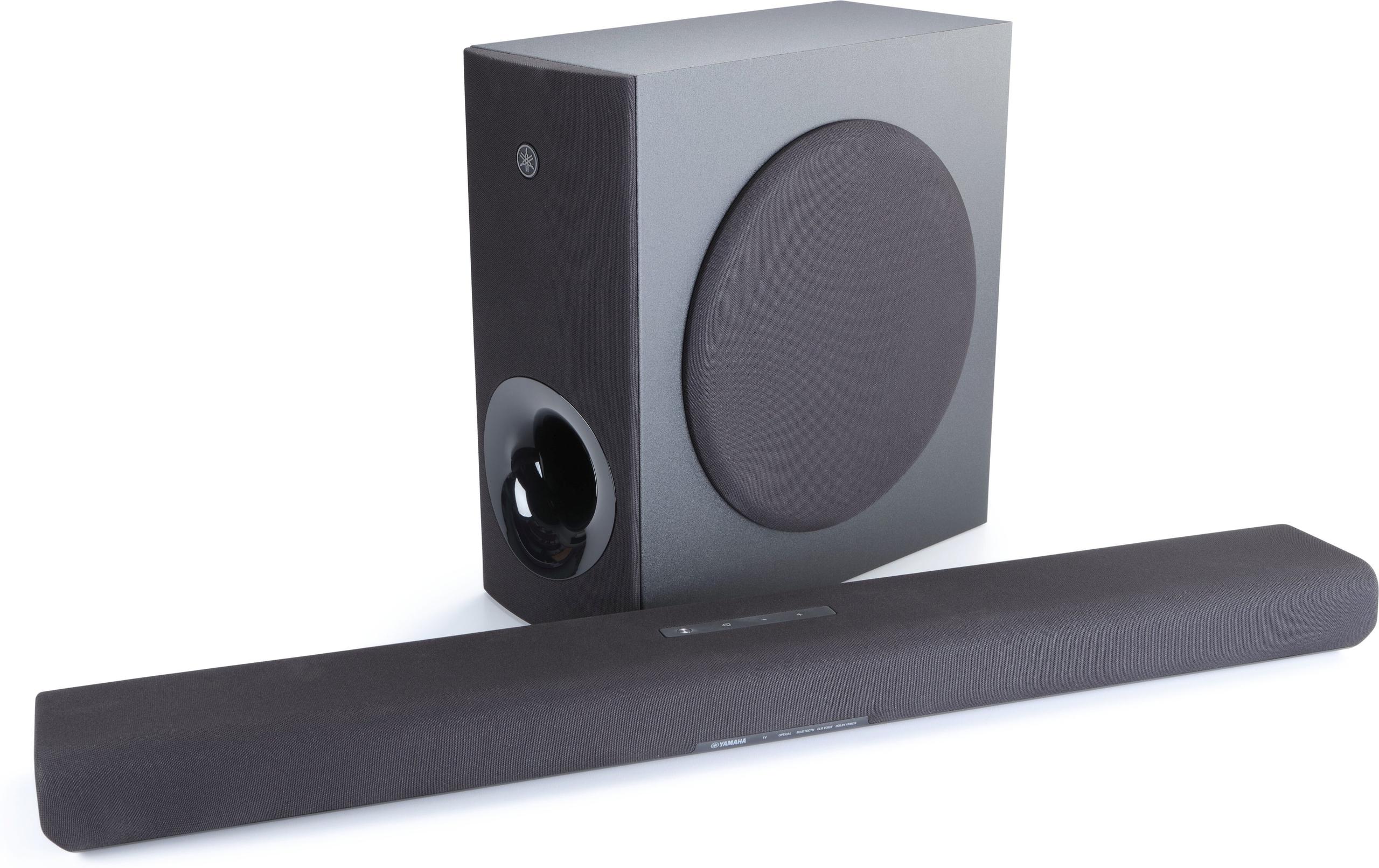
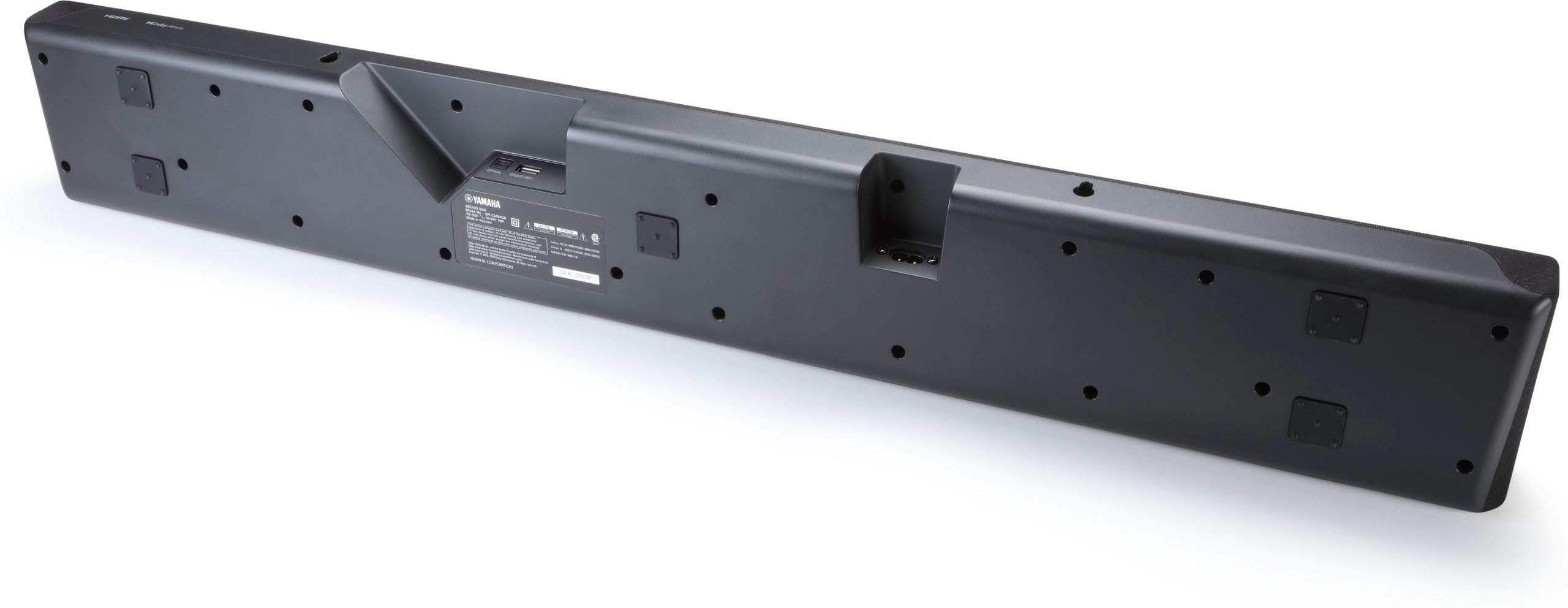
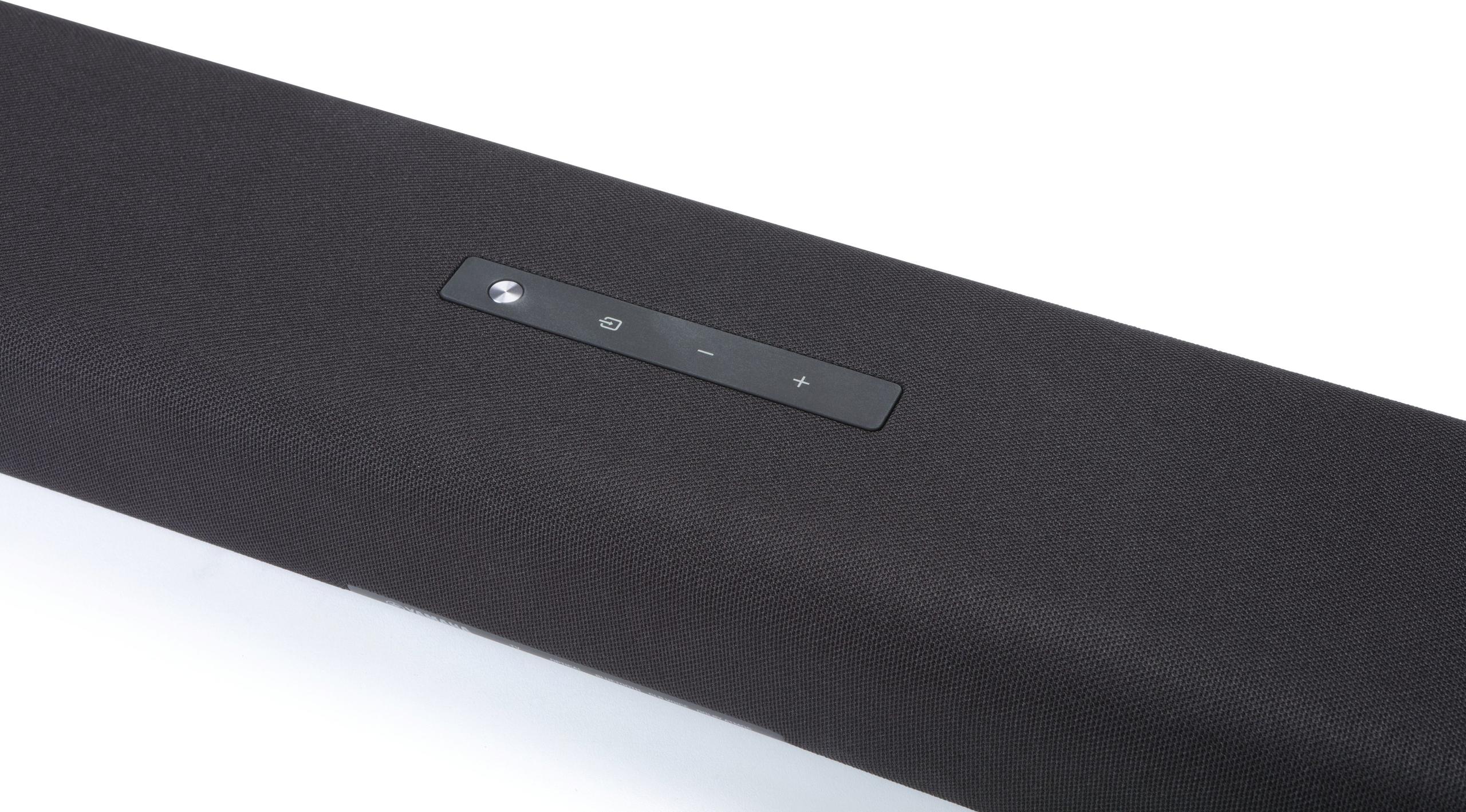
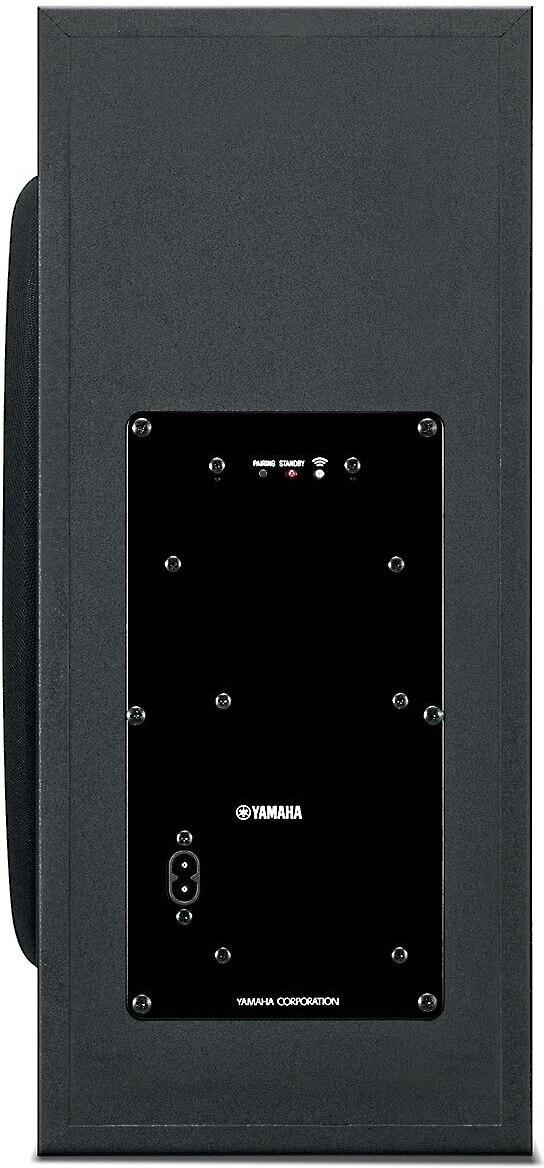
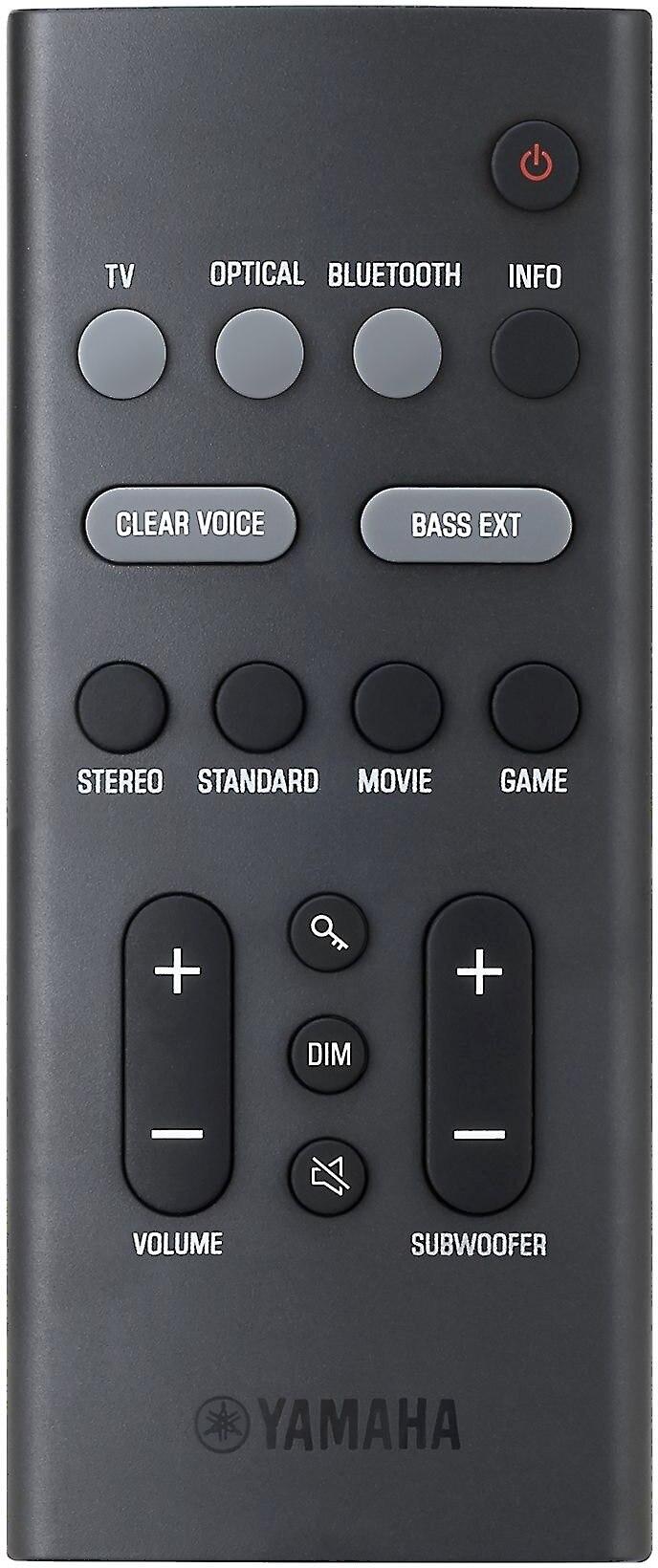
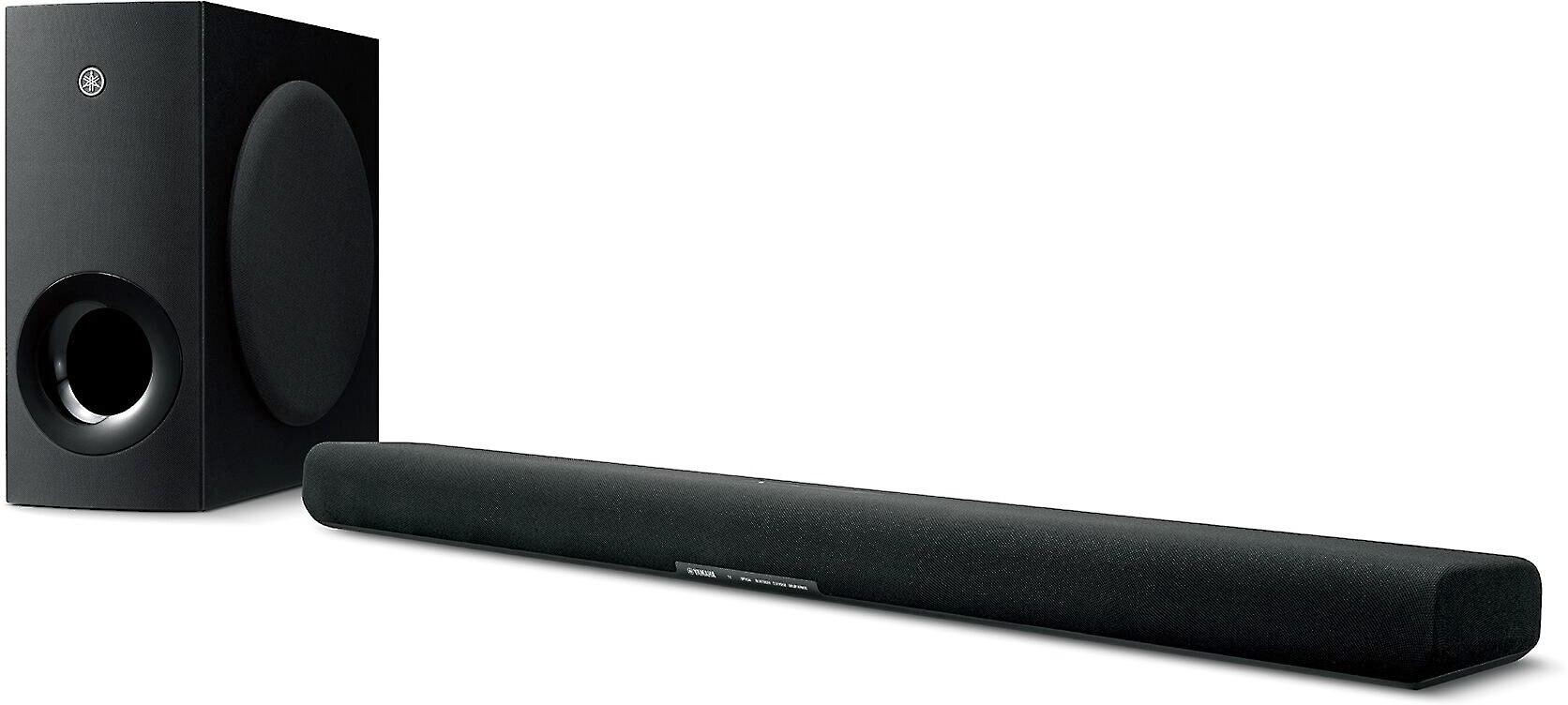
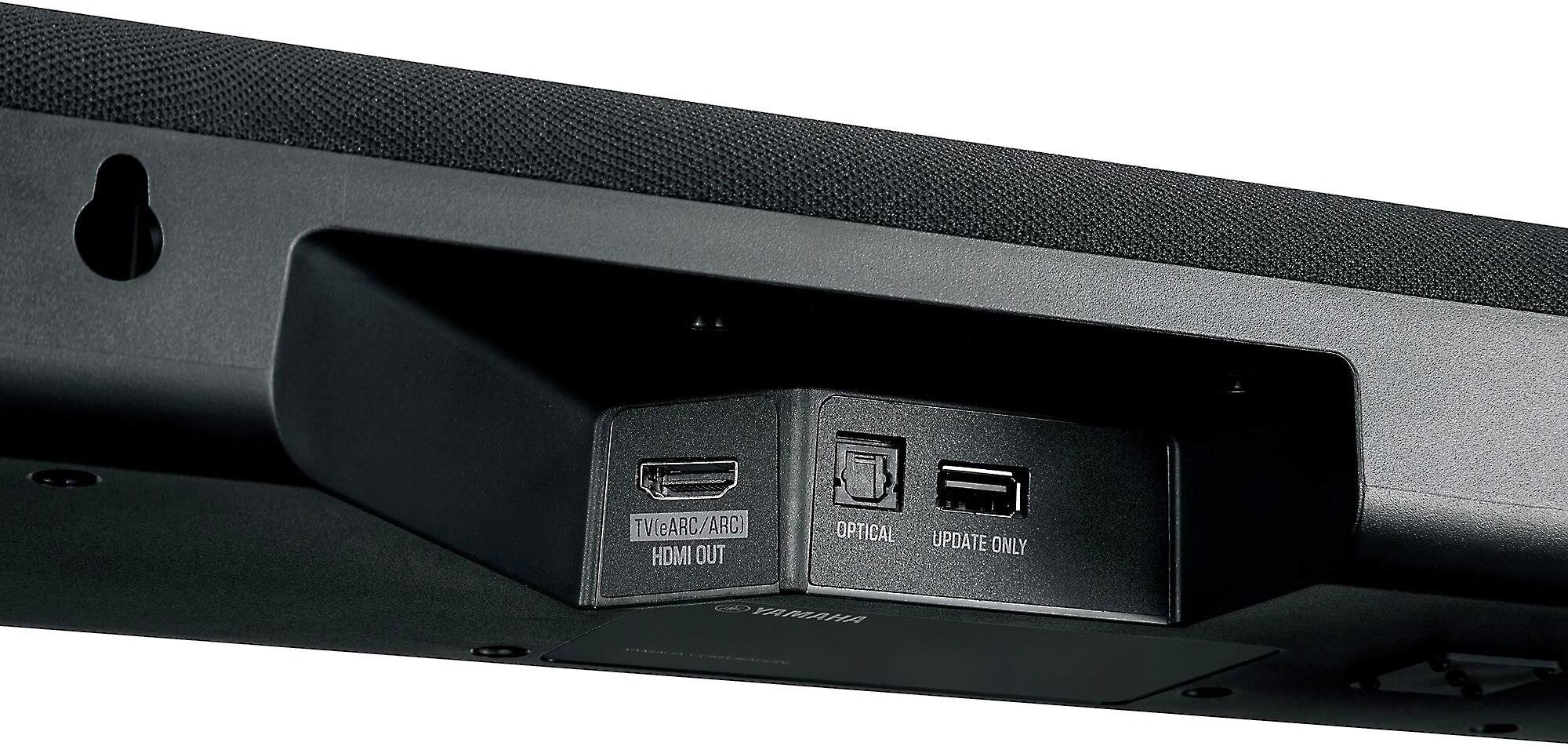
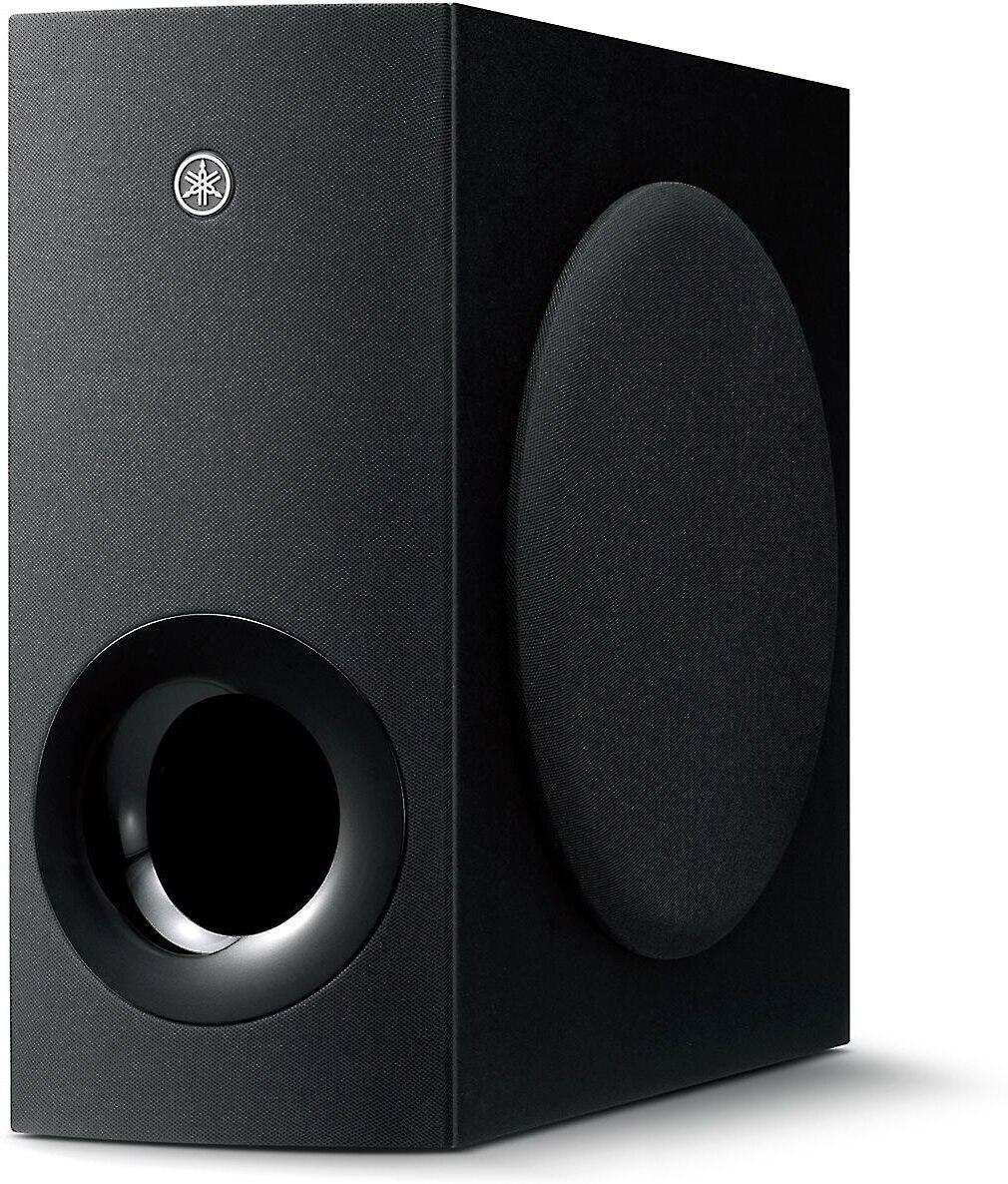
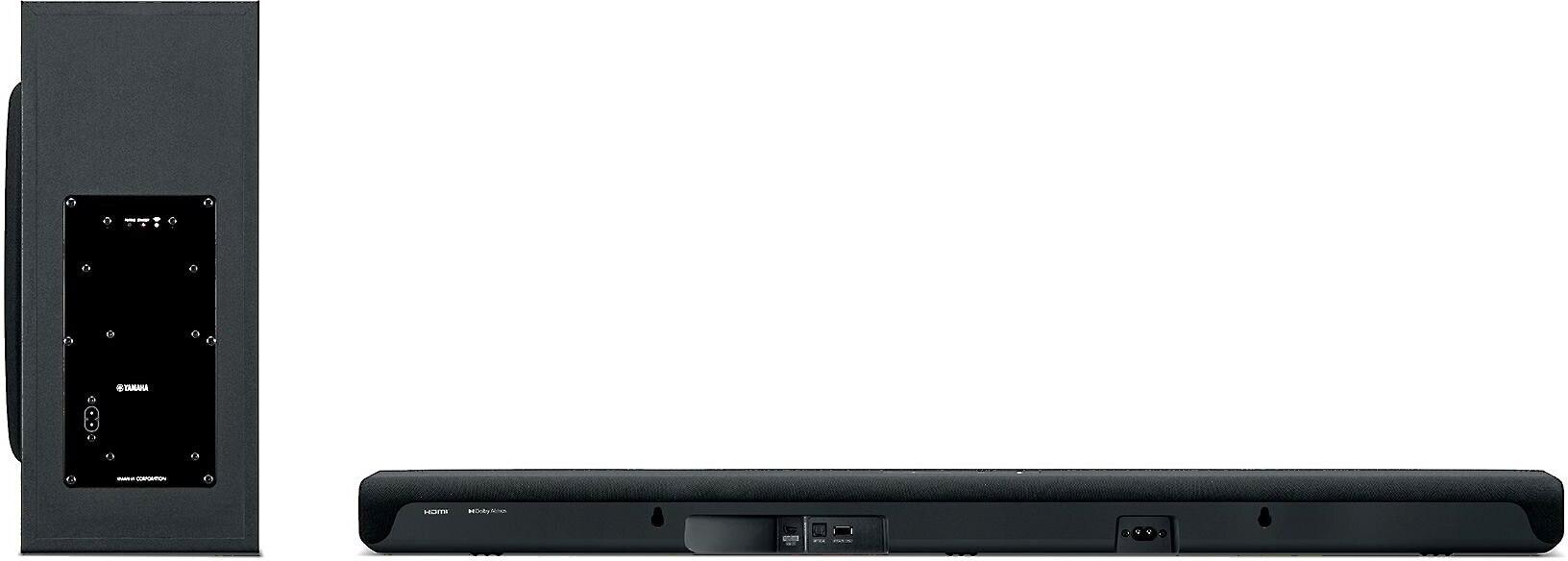
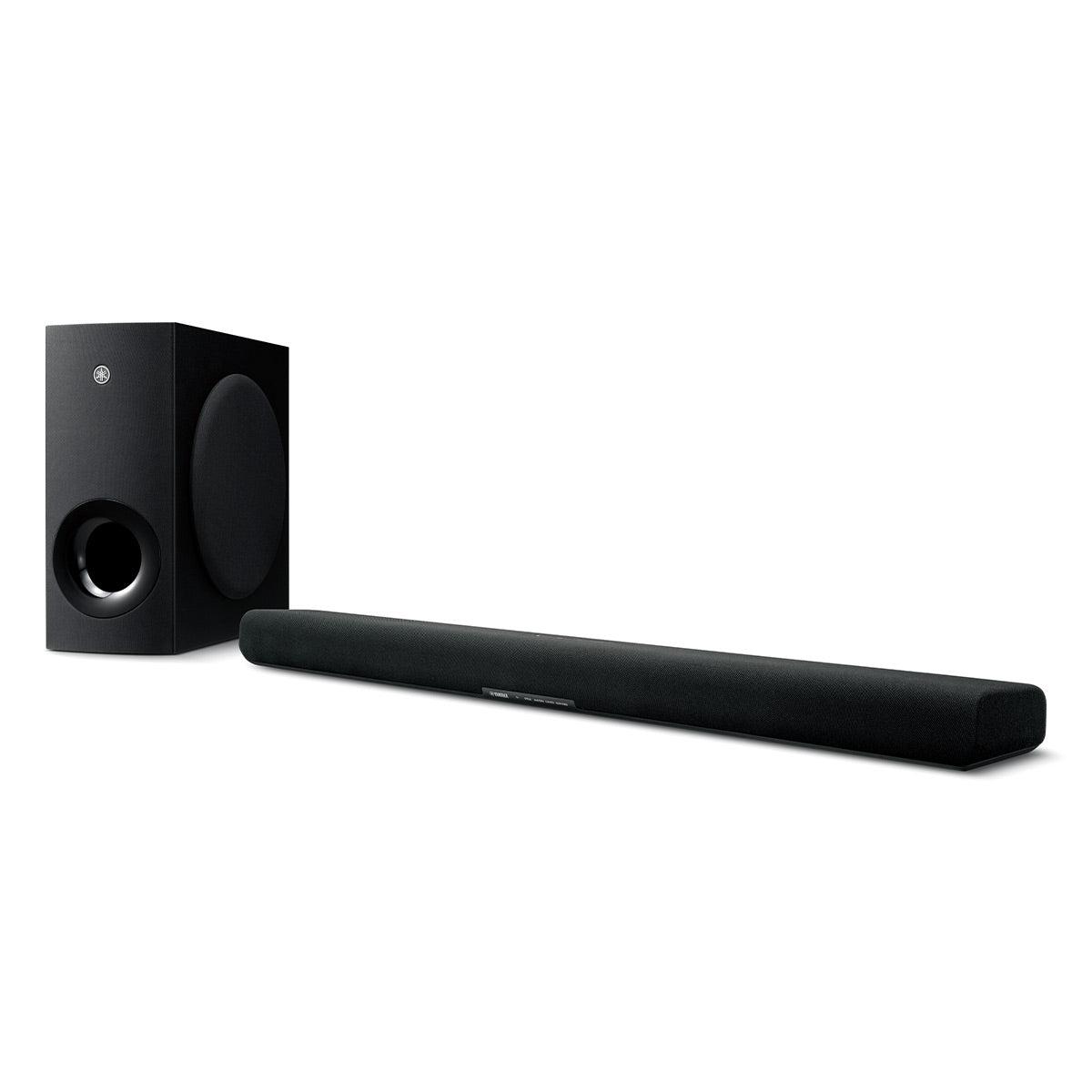
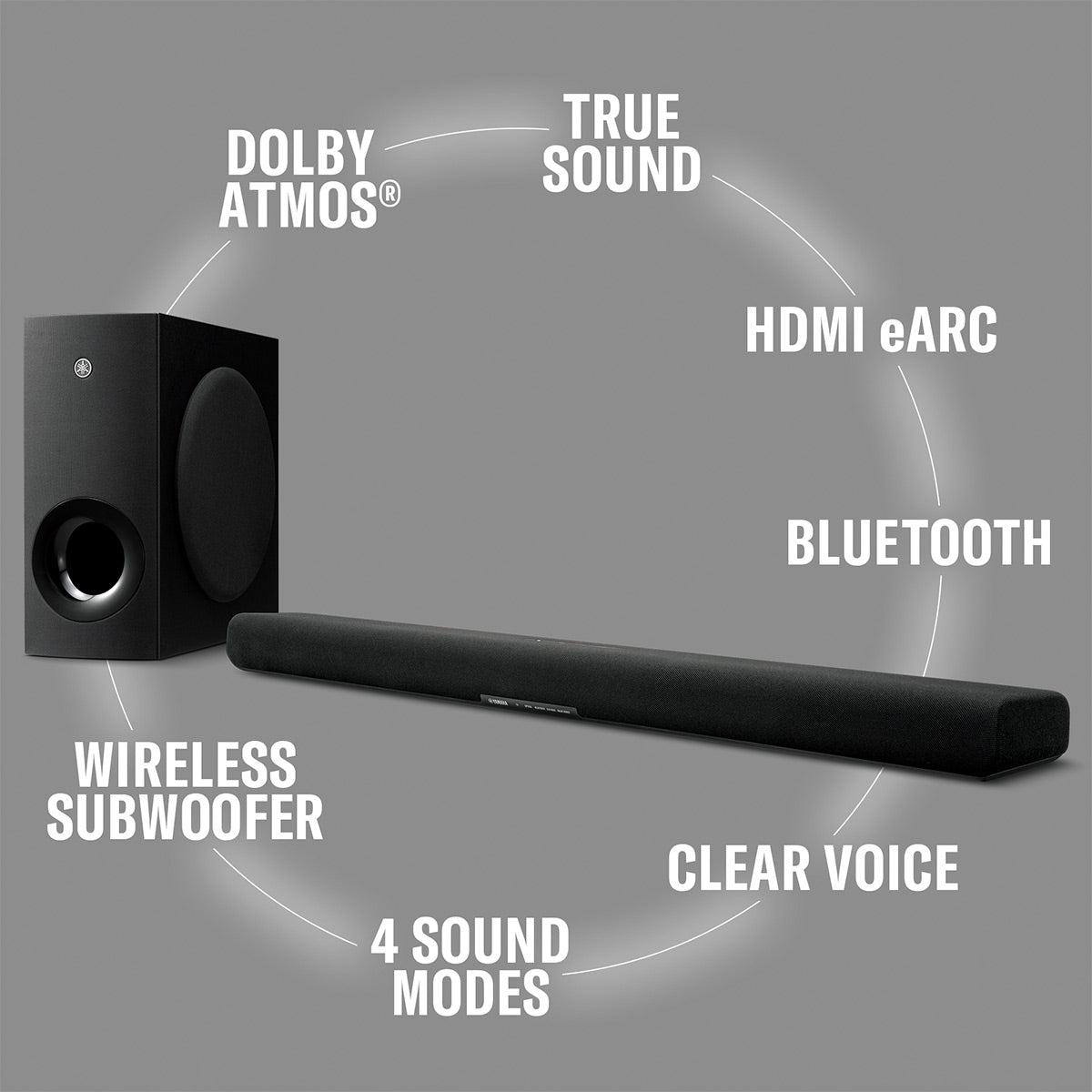












$399.95 Original price was: $399.95.$339.95Current price is: $339.95.
Since its release in late 2022, the Yamaha SR-B40A has established itself as a compelling mid-range option in the increasingly crowded soundbar market. At $279-$399, it represents Yamaha's response to a growing demand for premium features at more accessible price points.
The soundbar landscape has changed dramatically in recent years. What was once a simple TV audio upgrade has evolved into sophisticated sound systems with features like Dolby Atmos (a technology that creates immersive 3D sound) becoming more common. Yamaha has leveraged their audio expertise to bring these premium features downstream, making them accessible to more users.
In our testing, the SR-B40A consistently impressed with its audio performance. The system's 200W total power output (split between the main unit and subwoofer) might seem modest on paper, but Yamaha's engineering makes every watt count.
The soundbar uses four 1.8" cone drivers and two 1" dome tweeters for the main channels. In plain English, this means you get dedicated speakers for both mid-range sounds (like voices) and high frequencies (like cymbals or breaking glass). This separation results in clearer, more detailed audio than systems that try to handle everything with single drivers.
The wireless subwoofer, featuring a 6.25" driver, provides substantial bass impact without overwhelming the rest of the sound spectrum. During our movie testing, explosions in action scenes had genuine weight, while bass-heavy music maintained clarity rather than becoming a muddy mess.
What sets this soundbar apart is how it handles different types of content. The four sound modes (Movie, Music, Game, and Standard) aren't just marketing gimmicks - each makes noticeable adjustments to the sound profile:
The Clear Voice technology deserves special mention. It uses digital processing to enhance dialogue frequencies, making it easier to understand speech without cranking up the overall volume. This proved particularly useful for streaming content where audio mixing can be inconsistent.
One of the most appealing aspects of the Yamaha SR-B40A is its simplicity. The HDMI eARC connection means you can control basic functions with your TV remote - no juggling multiple remotes necessary. The wireless subwoofer pairs automatically and maintained a stable connection in our testing up to about 25 feet away.
The companion app provides deeper control over sound settings, including:
In a medium-sized living room (roughly 350 square feet), the SR-B40A created an impressive soundstage. While it doesn't provide the same overhead effects as more expensive Atmos systems with dedicated up-firing speakers, it still delivers a more spacious sound than traditional 2.1 systems.
During our testing with films like "Dune" and "Top Gun: Maverick," the soundbar demonstrated its capabilities:
For music, Bluetooth 5.1 connectivity with AAC support ensures good wireless audio quality from modern devices. The sound signature is relatively neutral, with the ability to add more bass via the Bass Extension feature if desired. We found it handled various genres well, from classical to hip-hop, though audiophiles might want to look at dedicated music systems.
Gamers will appreciate the low latency through HDMI and the dedicated game sound mode. Playing titles like "God of War Ragnarök" and "Horizon Forbidden West," the positional audio helped locate enemies, while the subwoofer gave weight to combat sequences.
At its price point, the Yamaha SR-B40A competes with systems like the Sony HT-G700 and Vizio M-Series. While some competitors offer more channels or higher power ratings, Yamaha's implementation of core features and overall sound quality makes it a compelling choice.
The inclusion of Dolby Atmos, wireless subwoofer, and app control at this price point is impressive. While you can get better performance by spending more, the law of diminishing returns kicks in quickly in the soundbar market.
The SR-B40A is ideal for:
It might not be the best choice for:
After extensive testing, the Yamaha SR-B40A proves itself as a thoughtfully designed soundbar that delivers where it matters most. It strikes an excellent balance between features, performance, and value, making it a smart choice for most users looking to upgrade their TV audio.
While it won't compete with systems costing twice as much or more, it provides the core features most users want - clear dialogue, impactful bass, and easy operation - while including premium features like Dolby Atmos and app control that were previously reserved for more expensive systems.
The sound quality and feature set make it a particularly compelling option for those building a home theater on a budget, where its performance-to-price ratio really shines. For most users, this soundbar hits the sweet spot of significant audio upgrade without unnecessary complexity or cost.
Yes, the Yamaha SR-B40A offers excellent value at its price point ($279-$399). With Dolby Atmos support, a wireless subwoofer, and clear sound quality, it's a worthy investment for most home theater setups, especially in medium-sized rooms.
Yes, it supports Dolby Atmos, though as a 2.1 system, it creates virtual height effects rather than using dedicated up-firing speakers. The effect is noticeable but not as dramatic as more expensive systems with dedicated height channels.
With 200W of total power, it's best suited for small to medium-sized rooms up to about 400 square feet. The sound fills these spaces effectively without distortion at higher volumes.
Yes, the subwoofer connects wirelessly with a range of up to 33 feet. It pairs automatically with the soundbar and maintains a stable connection within this range, offering flexible placement options in your room.
Yes, thanks to HDMI eARC connectivity, you can control basic functions like volume and power with your TV remote. This feature works with most modern TVs and simplifies daily operation.
The Clear Voice technology works very well, making dialogue clear and intelligible even during action scenes. You can adjust the Clear Voice intensity through the app to match your preferences.
Yes, it features Bluetooth 5.1 with AAC codec support, allowing high-quality wireless streaming from smartphones and other devices. The connection is stable and the sound quality is good for casual music listening.
Yes, it includes four sound modes: Movie, Music, Game, and Standard. Each mode optimizes the audio profile for different content types, with Movie mode being particularly effective for home theater use.
Setup is straightforward - connect the soundbar to your TV via HDMI, plug in both units for power, and the wireless subwoofer pairs automatically. The companion app makes additional adjustments simple.
Yes, the soundbar can be wall-mounted, and the package includes a mounting template. At 35.8 inches wide and 2.7 inches high, it's compatible with most TV sizes and wall-mounting scenarios.
We've done our best to create useful and informative comparisons to help you decide what product to buy. Our research has used advanced automated methods to create this comparison and perfection is not possible - please contact us for corrections or questions. These are the sites we've researched in the creation of this article: crutchfield.com - visions.ca - shop.usa.yamaha.com - bestbuy.com - bestbuy.com - usa.yamaha.com - my.yamaha.com - europe.yamaha.com - adorama.com - usa.yamaha.com - digitalhomecreations.com - europe.yamaha.com - sundownone.com
| Yamaha SR-B40A Sound Bar |
|---|
| Total System Power - Higher wattage enables better dynamic range and room-filling sound: 200W |
| Channel Configuration - Determines sound field and placement capabilities: 2.1 channels |
| Subwoofer Size - Larger drivers generally produce deeper, more impactful bass: 6.25" driver |
| Wireless Range - Important for subwoofer placement flexibility: 33 ft |
| Audio Processing - Enhanced sound field capabilities: Dolby Atmos |
| Connectivity - Determines compatibility with modern TVs: HDMI eARC, Optical, Bluetooth 5.1 |
| Sound Modes - Optimize audio for different content types: Movie, Music, Game, Standard |
| Bluetooth Version/Codecs - Affects wireless audio quality: v5.1 with AAC support |
| Soundbar Dimensions: 35.8" × 2.7" × 5.2" |
| Subwoofer Dimensions: 7.6" × 16.5" × 16" |
| Front Drivers: 1.8" cone (4x) + 1" dome tweeters (2x) |
| Power Consumption - Important for energy efficiency: 23W (normal), 0.6W (standby) |
The Bose TV Speaker ($199) takes a different approach, focusing on dialogue clarity and simplicity rather than immersive audio features. Its standout feature is the dedicated dialogue mode, which effectively enhances speech in TV shows and movies without requiring any complex setup. While it lacks a subwoofer and Dolby Atmos support, it delivers surprisingly good sound quality for its compact size and proves particularly effective in small to medium-sized rooms where basic audio enhancement is the primary goal.
At half the price of the Yamaha, the Bose TV Speaker represents solid value for users who prioritize clear dialogue and improved TV sound over cinematic effects. Its simplified feature set, including basic Bluetooth streaming and straightforward controls, makes it an attractive option for those who want better audio without the complexity of advanced sound systems. However, the lack of a subwoofer and limited sound customization options mean it can't match the Yamaha's room-filling sound or dynamic range, particularly during action scenes or bass-heavy content.
🤖 Read Detailed Comparison
👌Bose TV Speaker Soundbar Details
💵 See Bose TV Speaker Soundbar Price
The Yamaha SR-B30A ($279) takes a more compact approach with its all-in-one design, integrating dual 3-inch subwoofers into the main unit. This streamlined solution saves space and simplifies setup while still delivering surprisingly capable bass for its size. At $120 less than the SR-B40A, it represents an excellent value for those with space constraints or simpler audio needs. The built-in subwoofers provide adequate low-end response for most TV content and casual music listening, particularly in smaller rooms under 200 square feet.
However, the SR-B30A's integrated design does come with some performance limitations. The built-in subwoofers can't match the depth and impact of a dedicated external subwoofer, and the overall sound output is more constrained. While it supports virtual Dolby Atmos, the effect is less convincing than its pricier sibling. Still, for apartments, bedrooms, or situations where a separate subwoofer isn't practical, the SR-B30A offers a compelling balance of performance and simplicity. Its more controlled bass output might even be preferable in situations where neighbor considerations come into play.
🤖 Read Detailed Comparison
👌Yamaha SR-B30A Sound Bar with Built-In Subwoofers Details
💵 See Yamaha SR-B30A Sound Bar with Built-In Subwoofers Price
The JBL Bar 1000 ($1,139.95) represents a significant step up in home theater capabilities, offering true 7.1.4 channel surround sound with physical rear speakers and dedicated up-firing drivers for Dolby Atmos effects. Its innovative detachable wireless rear speakers provide genuine surround sound without permanent installation, while the larger 10-inch subwoofer delivers deeper, more impactful bass. The system's 880W total power output and advanced room calibration feature ensure cinema-quality audio that can fill even larger spaces with precise, dynamic sound.
While the price difference is substantial, the JBL Bar 1000 justifies its premium positioning with features that enhance the viewing experience, particularly for movie enthusiasts and gamers. The addition of WiFi streaming, Airplay, and Chromecast built-in offers more versatile connectivity options, while the PureVoice technology ensures clear dialogue even in complex sound mixes. However, buyers should consider whether they have the space and setup requirements to take full advantage of its advanced features, as the system requires more room and setup attention to achieve its full potential.
🤖 Read Detailed Comparison
👌JBL Bar 1000 Surround Sound System with 7.1.4 Channel Soundbar, 10" Wireless Subwoofer, Detachable Rear Speakers, and Dolby Atmo Details
💵 See JBL Bar 1000 Surround Sound System with 7.1.4 Channel Soundbar, 10" Wireless Subwoofer, Detachable Rear Speakers, and Dolby Atmo Price
The JBL Bar 700 ($899) represents a significant step up in both features and immersion, offering true 5.1 surround sound through its innovative detachable wireless rear speakers. Its larger 10-inch subwoofer delivers noticeably deeper bass extension and more impact during explosive movie scenes, while the dedicated center channel and PureVoice technology provide superior dialogue clarity in complex soundtracks. The addition of Wi-Fi connectivity enables streaming via AirPlay and Chromecast, making it a more versatile hub for all home entertainment needs.
However, the premium features of the JBL Bar 700 come with a steeper price tag and increased complexity. While its room calibration system and detachable rear speakers offer more flexibility for larger spaces, these advanced features may be overkill for smaller rooms or users seeking a simpler solution. The additional setup time and configuration options make it a better fit for enthusiasts who want to fine-tune their audio experience and don't mind paying more than twice the price for true surround sound capabilities. The system's larger physical footprint also requires more careful consideration of room layout and speaker placement.
🤖 Read Detailed Comparison
👌JBL Bar 700 Dolby Atmos 5.1 Soundbar with Subwoofer Details
💵 See JBL Bar 700 Dolby Atmos 5.1 Soundbar with Subwoofer Price
The JBL Bar 300 represents a more technologically advanced approach, leveraging MultiBeam virtual surround technology and Dolby Atmos support to create a more immersive listening experience from a single unit. While it lacks a dedicated subwoofer, its built-in bass drivers deliver surprisingly capable low-end performance, though not quite matching the Yamaha's depth and impact. The JBL's inclusion of Wi-Fi connectivity, along with AirPlay and Chromecast support, makes it a more versatile streaming solution, while its automatic room calibration feature helps optimize sound for specific room layouts.
At $399, the JBL Bar 300 commands a higher price but justifies it with its additional features and more sophisticated sound processing. Its virtual surround capabilities create a wider, more enveloping soundstage that's particularly noticeable during movies and gaming sessions. The PureVoice dialogue enhancement technology matches the Yamaha's clarity, while the single-unit design saves space and simplifies setup. However, users seeking maximum bass impact might miss having a dedicated subwoofer, and the additional smart features require more initial setup time and technical comfort to fully utilize.
🤖 Read Detailed Comparison
👌JBL Bar 300 5.0 Soundbar Details
💵 See JBL Bar 300 5.0 Soundbar Price
The Polk Audio MagniFi Max AX ($799) represents a significant step up in home theater capabilities, offering true Dolby Atmos performance through dedicated up-firing speakers and a more sophisticated 3.1.2 channel configuration. Its dedicated center channel delivers noticeably clearer dialogue, while the additional height channels create genuine overhead effects that enhance movies and games. The expanded connectivity options, including WiFi, AirPlay 2, and Chromecast, make it much more versatile for streaming music, and the ability to add wireless surround speakers offers future expansion potential.
However, these advanced features come at a premium price point that doubles the Yamaha's cost. While the Polk MagniFi Max AX delivers superior surround sound performance and better handles larger rooms, its benefits are most noticeable in dedicated home theater spaces with optimal ceiling heights and proper room acoustics. The more complex setup and additional features might be overkill for casual users who primarily watch TV shows or listen to music, but for serious home theater enthusiasts seeking a more immersive experience, the premium features and enhanced performance make it a worthwhile investment.
🤖 Read Detailed Comparison
👌Polk Audio MagniFi Max AX 3.1.2 Soundbar Details
💵 See Polk Audio MagniFi Max AX 3.1.2 Soundbar Price
The Bose Smart Ultra Soundbar elevates the home theater experience with true Dolby Atmos support and sophisticated AI-powered audio processing, though at $699.99, it commands a significant premium over the Yamaha. Its standout feature is the advanced spatial audio implementation, which creates a more convincing three-dimensional soundstage through upward-firing drivers and Bose's TrueSpace technology. The AI-driven dialogue enhancement analyzes content in real-time, providing superior voice clarity without sacrificing other audio elements, while the ADAPTiQ room calibration system optimizes sound specifically for your space.
Where the Bose Smart Ultra really differentiates itself is in its smart capabilities and overall ecosystem integration. Built-in voice assistants, WiFi streaming, and multi-room audio support make it a more versatile entertainment hub. While it lacks the Yamaha's dedicated subwoofer, Bose's sophisticated digital signal processing helps create respectable bass from the integrated drivers. For those who prioritize clean aesthetics and advanced features over raw bass power, and don't mind paying more for premium features, the Bose offers a more refined and feature-complete package that can serve as the centerpiece of a modern smart home entertainment system.
🤖 Read Detailed Comparison
👌Bose Smart Ultra Soundbar with Dolby Atmos Details
💵 See Bose Smart Ultra Soundbar with Dolby Atmos Price
The Sennheiser AMBEO Mini takes a distinctly different approach, focusing on advanced virtualization technology and smart features rather than traditional speaker arrangement. While it shares the same $399 price point, it uses sophisticated digital processing to create virtual 7.1.4 surround sound from a more compact 27.6-inch frame. The AMBEO's standout features include built-in room calibration, extensive streaming options (WiFi, AirPlay, Chromecast), and voice assistant integration - making it more versatile for whole-home audio. Music playback is notably more refined, with excellent detail and clarity that audiophiles will appreciate.
However, the AMBEO Mini's biggest drawback is its need for the optional $699 subwoofer to match the Yamaha's impact in movies and games. While its virtualization technology creates an impressive soundstage, it can't quite replicate the physical presence of a dedicated subwoofer at its base price. For those prioritizing music and wanting a more sophisticated, feature-rich solution - and who don't mind potentially spending more later - the AMBEO Mini offers a compelling alternative. Just be prepared for a more complex initial setup process and the likelihood of wanting to add the subwoofer for complete home theater performance.
🤖 Read Detailed Comparison
👌Sennheiser AMBEO Soundbar Mini Details
💵 See Sennheiser AMBEO Soundbar Mini Price
The $499 Klipsch Flexus Core 200 takes a different approach with its 3.1.2 configuration, offering true Dolby Atmos through dedicated up-firing speakers and a center channel for enhanced dialogue clarity. While it lacks a separate wireless subwoofer, the dual built-in 4-inch subwoofers provide respectable bass, and the system can be expanded later with wireless surrounds and an additional subwoofer. The premium build quality and wider soundstage make it particularly well-suited for dedicated home theater spaces, especially in larger rooms where its extra channels can create a more immersive experience.
However, the higher price point and lack of a dedicated wireless subwoofer make it a more complex value proposition. While the Klipsch offers superior sound placement and more expansion options, these benefits may not justify the $100 premium for users who prioritize simplicity or powerful bass response. The ability to expand to a full 5.1.2 system later could make it more appealing for those planning to build out their home theater over time, but the Yamaha provides a more complete out-of-the-box experience for most users.
🤖 Read Detailed Comparison
👌Klipsch Flexus Core 200 3.1.2 Soundbar Details
💵 See Klipsch Flexus Core 200 3.1.2 Soundbar Price
The Bose Solo Series 2 ($179.99) takes a fundamentally different approach, focusing on simplicity and dialogue clarity in a compact single-unit design. While it can't match the Yamaha's bass response or surround capabilities, it excels at its primary mission of improving TV audio clarity. The Bose's streamlined setup process and smaller footprint make it particularly appealing for those with space constraints or who prioritize ease of use over advanced features.
At less than half the price of the Yamaha, the Bose Solo Series 2 represents solid value for users seeking basic audio enhancement without the complexity of a separate subwoofer. However, its limitations become apparent in larger rooms or with bass-heavy content like action movies and modern music. While it's a capable upgrade from built-in TV speakers, it lacks the immersive experience and future-proof features that make the Yamaha a more complete home theater solution.
🤖 Read Detailed Comparison
👌Bose Solo Soundbar Series 2 Soundbar Details
💵 See Bose Solo Soundbar Series 2 Soundbar Price
The Samsung HW-Q990D ($1,997.99) takes a dramatically different approach with its premium 11.1.4-channel configuration, offering true surround sound through additional rear speakers and dedicated up-firing drivers for height effects. While its price tag is significantly higher, it delivers a genuinely immersive home theater experience with precise sound placement and overhead effects that the Yamaha can't match. The Samsung also includes advanced features like room correction, HDMI 2.1 gaming support, and wireless streaming options including AirPlay 2 and Wi-Fi connectivity.
However, the Samsung's premium features and superior performance come at a price that's five times higher than the Yamaha. While the HW-Q990D undoubtedly offers better sound quality and more features, many users may find it difficult to justify the additional cost unless they're serious about home theater or have a larger room where its advanced capabilities can truly shine. The multiple speaker setup also requires more space and careful placement to achieve optimal performance, making it less suitable for smaller rooms or simpler installations where the Yamaha excels.
🤖 Read Detailed Comparison
👌Samsung HW-Q990D 11.1.4 Channel Sound Bar Details
💵 See Samsung HW-Q990D 11.1.4 Channel Sound Bar Price
The Klipsch Flexus Core 100 ($349.99) takes a different approach with its all-in-one design, featuring dual built-in subwoofers instead of a separate wireless unit. This more compact solution might appeal to apartment dwellers or those wanting a cleaner setup. The standout feature is its expandability - users can add wireless surround speakers and an additional subwoofer later, making it a flexible foundation for a growing home theater system. The inclusion of USB-C connectivity also adds modern versatility that the Yamaha lacks.
While the Klipsch can't match the Yamaha's deep bass impact and Dolby Atmos processing, it delivers impressively detailed sound from its more compact form factor. At $50 less than the Yamaha, the Klipsch Flexus Core 100 represents solid value, especially for those primarily watching TV shows and movies where extreme bass isn't crucial. Its premium build quality and potential for future expansion make it a compelling alternative for those who prefer a simpler initial setup with room to grow.
🤖 Read Detailed Comparison
👌Klipsch Flexus Core 100 Soundbar Details
💵 See Klipsch Flexus Core 100 Soundbar Price
The Samsung HW-B550D offers a compelling alternative at $177.99, featuring a 3.1 channel configuration that includes a dedicated center channel for enhanced dialogue clarity. This design choice makes it particularly effective for TV shows and movies where clear speech is crucial. The DTS Virtual:X processing and Adaptive Sound Lite technology automatically optimize audio based on content type, while its dedicated game mode reduces audio lag - features that make it a versatile choice for mixed-use entertainment setups.
While it can't match the Yamaha's superior bass response and musical performance, the Samsung delivers impressive value with its balanced sound signature and smaller footprint, making it an excellent choice for apartments and medium-sized rooms. The Samsung HW-B550D handles most content types competently, and its 5-inch subwoofer provides adequate low-end response for typical TV and movie viewing. For buyers prioritizing dialogue clarity and overall value over premium audio performance and deep bass extension, the Samsung represents one of the best price-to-performance ratios in the current soundbar market.
🤖 Read Detailed Comparison
👌Samsung HW-B550D 3.1 Channel Sound Bar Details
💵 See Samsung HW-B550D 3.1 Channel Sound Bar Price
The Samsung B-Series ($277.99) takes a different approach to home theater sound with its true 5.1 channel configuration, offering physical rear speakers that create genuine surround sound rather than relying on virtual processing. This setup particularly shines in larger rooms where sound can spread naturally, and its dedicated game mode enhances positional audio cues that competitive gamers will appreciate. The inclusion of multiple sound modes, including Adaptive Sound and Voice Enhance, helps tailor the audio experience to different content types, while its higher total power output of 340W provides ample headroom for dynamic movie soundtracks.
When it comes to value, the Samsung delivers impressive features at a significantly lower price point, though it sacrifices some of the audio refinement found in the Yamaha. While its bass isn't quite as tight and controlled, and its dialogue clarity isn't as sophisticated, the ability to create true surround sound makes it a compelling choice for home theater enthusiasts who prioritize immersion over absolute sound quality. The trade-off comes in setup complexity - you'll need to consider placement and power for the rear speakers - but for many, the authentic surround sound experience will be worth the extra effort.
🤖 Read Detailed Comparison
👌Samsung B-Series 5.1 Channel Soundbar with Subwoofer Details
💵 See Samsung B-Series 5.1 Channel Soundbar with Subwoofer Price
The $698 Sony HT-A8000 takes a more premium approach to home theater sound with its 7.1.2 channel configuration and true Dolby Atmos support via dedicated up-firing speakers. Where it really stands out is in its connectivity options and expandability - offering Wi-Fi streaming, multiple HDMI inputs, and the ability to add wireless rear speakers and a separate subwoofer later. The Sony's more sophisticated processing and driver array creates a notably larger soundstage, particularly beneficial in rooms larger than 300 square feet, and its integration with Sony BRAVIA TVs can enhance the overall viewing experience.
However, at nearly twice the price, the value proposition becomes more complex. While the Sony delivers superior surround sound performance and offers more future-proofing with its expandability, many users may find the additional features unnecessary for their needs. The $698 Sony HT-A8000 makes the most sense for those who have larger rooms, frequently stream music, want true Atmos performance, or plan to build out a more comprehensive system over time. For basic TV and movie watching in small to medium-sized rooms, the additional investment may be hard to justify.
🤖 Read Detailed Comparison
👌Sony HT-A8000 BRAVIA Theater Bar 8 Soundbar Details
💵 See Sony HT-A8000 BRAVIA Theater Bar 8 Soundbar Price
The Sennheiser AMBEO Plus ($1,499.95) represents a significant step up in both technology and audio performance, offering sophisticated virtual surround sound that creates a more convincing home theater experience. Its advanced room calibration system uses built-in microphones to analyze your space and optimize sound accordingly, resulting in more precise audio positioning and better overall balance. While it doesn't include a separate subwoofer, the integrated bass drivers deliver nuanced low frequencies, and the optional AMBEO subwoofer can be added for those seeking maximum impact. The addition of AirPlay 2, Chromecast, and voice assistant support makes it a more versatile streaming solution, particularly valuable for those invested in whole-home audio.
However, the premium features and performance of the AMBEO Plus come at nearly four times the price of the SR-B40A, placing it in a different category altogether. The advanced virtualization technology and 7.1.4 channel processing create a more immersive soundstage that's particularly noticeable in larger rooms, but these benefits may be less apparent in smaller spaces. For movie enthusiasts and audiophiles who appreciate subtle audio details and want a more theater-like experience without multiple speakers, the AMBEO Plus offers compelling advantages. Yet, its sophisticated calibration process and higher price point make it a more significant investment that's best suited for users who prioritize audio quality and features over immediate value.
🤖 Read Detailed Comparison
👌Sennheiser AMBEO Soundbar Plus Home Theater System Details
💵 See Sennheiser AMBEO Soundbar Plus Home Theater System Price
The $397 Samsung HW-S700D takes a different approach with its 3.1-channel configuration, featuring a dedicated center channel that delivers noticeably clearer dialogue in movies and TV shows. Its standout SpaceFit Sound calibration automatically optimizes audio for your specific room, while Q-Symphony technology allows seamless integration with Samsung TV speakers for enhanced sound. When paired with a Samsung TV, you'll also get wireless Dolby Atmos support and deeper ecosystem integration through the SmartThings app.
However, where the Samsung falls slightly short is in music playback and universal compatibility. While the $397 Samsung HW-S700D produces good sound across all content types, it lacks the Yamaha's musical refinement and true Dolby Atmos support for non-Samsung TVs. Its slimmer profile might be more aesthetically pleasing, but the slightly smaller 6" subwoofer doesn't quite match the Yamaha's bass impact. For Samsung TV owners who prioritize dialogue clarity and automated room optimization, it's an excellent alternative at the same price point. Those seeking the best musical performance or universal Dolby Atmos support might prefer the Yamaha.
🤖 Read Detailed Comparison
👌Samsung HW-S700D 3.1 Channel Slim Soundbar Details
💵 See Samsung HW-S700D 3.1 Channel Slim Soundbar Price
The $999 Sonos Arc Ultra takes a distinctly premium approach with its true Dolby Atmos implementation and sophisticated speaker array. While it costs significantly more, especially when adding the optional subwoofer, it delivers noticeably superior sound quality with better separation, more precise positioning, and more convincing height effects. The Arc Ultra also offers advanced features like WiFi streaming, multi-room audio capabilities, and voice control integration, making it part of a broader ecosystem that can grow over time.
However, this added performance and flexibility comes at more than twice the price of the Yamaha, and that's before adding a subwoofer. While the Sonos Arc Ultra excels in larger rooms and can deliver a more refined audio experience, many users may find the Yamaha's included subwoofer and straightforward setup more appealing for typical living room use. The Sonos makes more sense for those planning to build a larger home theater system over time or those who prioritize premium audio quality and smart home integration over immediate value.
🤖 Read Detailed Comparison
👌Sonos Arc Ultra Dolby Atmos Soundbar Details
💵 See Sonos Arc Ultra Dolby Atmos Soundbar Price
The Sony HT-A3000 ($498) distinguishes itself with a more sophisticated 3.1-channel configuration, featuring a dedicated center channel that delivers superior dialogue clarity compared to the Yamaha's virtual center. While it lacks the Yamaha's powerful external subwoofer, Sony's integration of smart features like WiFi streaming, voice control, and comprehensive format support (including DTS:X) creates a more versatile entertainment hub. The ability to expand the system with optional rear speakers also provides a future upgrade path that the Yamaha doesn't offer.
For the additional $100 investment, the Sony HT-A3000 provides more refined audio processing and room correction technology, which can make a noticeable difference in challenging room layouts. Its integration with Sony TVs through Acoustic Center Sync technology can enhance the viewing experience for Sony TV owners. However, bass enthusiasts might find the built-in subwoofers less impactful than the Yamaha's external unit, and the added complexity of smart features could be unnecessary for users seeking a simpler solution. The choice ultimately comes down to whether the enhanced dialogue clarity and smart features justify the higher price point over the Yamaha's stronger bass performance and straightforward operation.
🤖 Read Detailed Comparison
👌Sony HT-A3000 3.1ch Dolby Atmos Soundbar Details
💵 See Sony HT-A3000 3.1ch Dolby Atmos Soundbar Price
The Sonos Ray takes a more minimalist approach, focusing on simplicity and ecosystem integration rather than traditional home theater features. Its compact design and superior streaming capabilities make it particularly appealing for music lovers and those in smaller spaces. While it lacks the SR-B40A's subwoofer and Dolby Atmos support, it delivers surprisingly good sound quality through its custom-designed waveguides and speech enhancement technology. The Trueplay room tuning feature, unique to Sonos products, helps optimize sound for specific room acoustics, though it's only available for iOS users.
At $279, the Ray represents a more budget-friendly option, though its optical-only connection and absence of Bluetooth might feel limiting to some users. Where it really shines is in its integration with the broader Sonos ecosystem - users can easily expand their system over time with additional Sonos speakers for multi-room audio or surround sound. For those prioritizing music streaming, apartment living, or those already invested in the Sonos ecosystem, the Ray offers solid value despite its more basic home theater capabilities.
🤖 Read Detailed Comparison
👌Sonos Ray Soundbar Details
💵 See Sonos Ray Soundbar Price
The Sonos Beam Gen 2 ($352.70) takes a different approach to home audio, focusing on smart features and ecosystem integration rather than raw power. Its standout capabilities include voice control through Alexa or Google Assistant, AirPlay 2 support, and seamless integration with other Sonos speakers for multi-room audio. While it lacks a dedicated subwoofer, it compensates with sophisticated digital processing and room calibration technology that optimizes sound for your specific space. The compact, single-unit design might appeal to those with limited space or who prefer a cleaner aesthetic, though it can't match the SR-B40A's bass impact.
For users interested in building a flexible, expandable audio system, the Sonos Beam Gen 2 offers more long-term value despite its lower initial price point. It can be enhanced later with additional Sonos speakers and a subwoofer, though these upgrades will significantly increase the total cost. The Beam Gen 2's WiFi streaming capabilities and robust app control provide a more sophisticated user experience compared to the SR-B40A's basic Bluetooth connectivity. However, those primarily focused on home theater performance and immediate impact might find the lack of a dedicated subwoofer and virtual-only Atmos support limiting compared to the SR-B40A's more traditional home theater approach.
🤖 Read Detailed Comparison
👌Sonos Beam Gen 2 Soundbar Details
💵 See Sonos Beam Gen 2 Soundbar Price
The Samsung HW-Q800D offers several notable upgrades over the Yamaha, including true 5.1.2-channel Dolby Atmos with dedicated height speakers, a larger 8-inch subwoofer, and advanced features like SpaceFit Sound room correction. The Samsung's additional channels and processing power create a more immersive soundstage, particularly noticeable during movies with surround sound effects. For Samsung TV owners, the Q-Symphony feature integrates the TV's speakers with the soundbar for enhanced audio performance, though this benefit is limited to specific TV models.
At $697.99, the Samsung commands a significant premium over the Yamaha, and whether that price difference is justified depends largely on your room setup and viewing habits. While it delivers superior surround sound performance and more features, many users may not have the ideal room configuration to benefit from the height channels, or may not watch enough Dolby Atmos content to justify the additional cost. The Samsung makes more sense for dedicated home theater spaces and serious movie enthusiasts, while the Yamaha remains a stronger value proposition for everyday use in typical living rooms.
🤖 Read Detailed Comparison
👌Samsung HW-Q800D 5.1.2 Channel Soundbar Details
💵 See Samsung HW-Q800D 5.1.2 Channel Soundbar Price
The $999 LG S95TR takes a dramatically different approach with its premium 9.1.5 channel configuration, featuring true Dolby Atmos with dedicated up-firing speakers and physical rear surrounds. Where the Yamaha creates virtual surround effects, the LG delivers actual sound placement throughout the room, creating a more convincing home theater experience. Its additional features like AI room calibration, Wi-Fi streaming, and voice assistant support make it a more versatile entertainment hub, though these extras contribute to its higher price point.
However, the LG's enhanced capabilities come with increased complexity in both setup and daily use. While it offers superior technical performance and more features, many users may not have the room layout or desire to optimize multiple speaker positions and settings. The price difference is substantial, and for many viewers, especially those in smaller spaces or primarily watching standard TV content, the extra investment may not translate to proportionally better real-world enjoyment. The LG excels for dedicated home theater enthusiasts with larger rooms, but its benefits are less pronounced for casual viewing.
🤖 Read Detailed Comparison
👌LG S95TR 9.1.5 Channel Soundbar with Dolby Atmos Soundbar Details
💵 See LG S95TR 9.1.5 Channel Soundbar with Dolby Atmos Soundbar Price
The Polk Audio Signa S4 takes a more focused approach to home theater audio with its true 3.1.2 Dolby Atmos configuration, featuring dedicated upward-firing height speakers that create genuine overhead sound effects. Released in early 2022, it introduced premium features like VoiceAdjust technology, which provides exceptional dialogue clarity through its dedicated center channel. While its 5.9-inch subwoofer is more compact than the Yamaha's, the Polk's seven-driver array creates a wider, more precise soundstage that particularly benefits movie watching. The implementation of physical height channels rather than virtual processing results in more convincing overhead effects, especially noticeable in modern Atmos-enabled content.
For home theater enthusiasts, the Polk Audio Signa S4 offers compelling value at the same price point as the Yamaha. Its true Atmos capabilities and superior dialogue enhancement make it particularly well-suited for dedicated movie watching in small to medium-sized rooms with suitable ceiling heights. While it may not match the Yamaha's bass impact or music performance, its focus on creating an immersive movie experience with genuine overhead effects makes it a strong alternative for those prioritizing home theater use. The trade-off comes down to whether you value true Atmos implementation and dialogue clarity over the deeper bass response and more versatile performance of the Yamaha system.
🤖 Read Detailed Comparison
👌Polk Audio Signa S4 Dolby Atmos Soundbar with Wireless Subwoofer Details
💵 See Polk Audio Signa S4 Dolby Atmos Soundbar with Wireless Subwoofer Price
The TCL Q85H Q Class represents a significant step up in both capabilities and price at $999, offering a true home theater experience with its 7.1.4 channel configuration. Its standout features include genuine Dolby Atmos performance through dedicated up-firing speakers, advanced AI room calibration, and comprehensive surround sound coverage with wireless rear speakers. The Ray-Danz acoustic wave-guide technology creates an exceptionally wide soundstage, while the premium 6.5-inch subwoofer delivers deeper, more authoritative bass. For larger rooms and dedicated home theater spaces, this system provides a level of immersion that virtual surround processing simply can't match.
While the price difference is substantial, the TCL Q85H Q Class justifies its premium positioning for users seeking cinema-quality audio at home. The ability to precisely place sounds in a three-dimensional space makes a notable difference in modern movies and games, while the multiple HDMI 2.1 inputs and eARC support ensure future-proof connectivity. For those with the space and budget to accommodate a full surround setup, the TCL offers a compelling alternative to traditional AV receiver-based systems, delivering similar performance in a more streamlined package. However, buyers should consider whether their room size and primary use cases will allow them to take full advantage of its advanced capabilities.
🤖 Read Detailed Comparison
👌TCL Q85H Q Class 7.1.4 Channel Sound Bar System Details
💵 See TCL Q85H Q Class 7.1.4 Channel Sound Bar System Price
The Sony HT-A5000 ($999) represents a significant step up in home theater capability, offering true 5.1.2 channel surround sound with dedicated height speakers for Dolby Atmos content. Its sophisticated audio processing, including 360 Spatial Sound Mapping and advanced room calibration, creates a more immersive listening experience that comes closer to a traditional multi-speaker setup. The additional connectivity options, including HDMI 2.1, WiFi, AirPlay 2, and Chromecast, provide greater flexibility for integration with modern home theater systems and streaming services.
However, the premium features of the HT-A5000 come at nearly four times the price of the SR-B40A. While the Sony delivers superior surround sound performance and more refined audio processing, these advantages may not justify the cost difference for many users, particularly in smaller rooms or for those primarily watching standard TV content. The HT-A5000's expandability with optional rear speakers and additional subwoofers makes it a better choice for those planning to build out a more comprehensive home theater system over time, but its basic sound quality improvements over the SR-B40A are more incremental than revolutionary.
🤖 Read Detailed Comparison
👌Sony HT-A5000 5.1.2 Channel Home Theater Soundbar Details
💵 See Sony HT-A5000 5.1.2 Channel Home Theater Soundbar Price
The Sonos Arc represents a significant step up in audio sophistication, featuring 11 precisely-tuned drivers including dedicated up-firing speakers for true Dolby Atmos performance. While it comes at a higher $564 price point without a subwoofer, it delivers noticeably superior sound staging and clarity, particularly evident in how it handles complex movie soundtracks and music. The Arc's more extensive driver array creates a wider, taller soundstage with better separation between elements, making it easier to pinpoint sound locations and enjoy a more immersive experience. Its TruePlay room correction technology also helps optimize sound for your specific space, something the Yamaha doesn't offer.
Where the Sonos Arc really distinguishes itself is in its smart features and expandability. Built-in voice assistants, AirPlay 2 support, and seamless integration with the wider Sonos ecosystem make it much more than just a soundbar - it's a sophisticated audio platform that can grow with your needs. While adding a Sonos Sub and rear speakers significantly increases the total investment, it allows for a genuine 5.1.2 surround system that outperforms the Yamaha in every aspect except initial value. The Arc's regular software updates also mean it continues to improve over time, adding features and compatibility that keep it current longer than traditional soundbars.
🤖 Read Detailed Comparison
👌Sonos Arc Wireless Sound Bar with Dolby Atmos, Apple AirPlay 2, and Built-in Voice Assistant (White) Details
💵 See Sonos Arc Wireless Sound Bar with Dolby Atmos, Apple AirPlay 2, and Built-in Voice Assistant (White) Price
$5,997.99 Original price was: $5,997.99.$5,797.99Current price is: $5,797.99.
$209.99 Original price was: $209.99.$198.99Current price is: $198.99.
$99.99 Original price was: $99.99.$69.99Current price is: $69.99.
$79.98 Original price was: $79.98.$58.95Current price is: $58.95.

